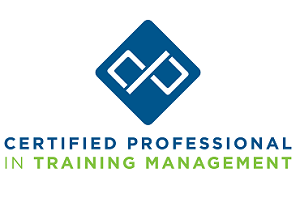After more than 25 years of experience training 20,000 learners at organizations like Disney, Delta Airlines, and Dun & Bradstreet, I’m convinced that virtual learning is not only more inclusive than in-person learning: It’s actually superior.
By “inclusive,” I mean that every learner is valued equally; their time and talents are respected; and potential barriers to learning are removed. And by “superior,” I’m referring to research indicating that learners in well-designed virtual environments are 600% more likely to engage in post-session application than in-person learners.
Reframe Your View of Learners
Too often, in learning and development (L&D) settings, learners are treated like quotas rather than skilled contributors to their organization. Although educators may provide Sharpies and nametags to participants, they rarely learn their names — let alone draw upon their deep expertise during the training.
Both the content and learning environment follow a one-size-fits-all-approach with little consideration for the tenure, roles or perspectives of the learners.
Neuroscientific research indicates that people in interactive learning environments retain 27% of course material after 24 hours, compared to 2% of material in lecture-based environments. Lectures also discourage learners from asking critical questions in real time, which can thwart learner comprehension and prevent educators from accurately gauging how much participants actually understand.
Given how quickly humans forget information — 64% after nine hours, according to Ebbinghaus’ research on the topic — people don’t seem wired for learning through lectures. As L&D leaders, we must reimagine our role as guides who help learners move through a process instead of monologuing figureheads. We need to constantly survey our audience — via hand signals, chat responses, emojis, etc. — for signs of confusion so we can clarify material in real-time. It also means embracing spontaneous class discussions where you may not know all the answers to the questions being asked.
Think Outside the Slide
When Microsoft launched PowerPoint as a presentation tool in 1987, there were no smartphones, laptop cameras or even the internet. Back then, education happened in person and followed the traditional “sage-on-stage” model. Despite major advances in technology (and decreases in attention spans), the formula for learning hasn’t evolved to reflect three decades of change.
Even though PowerPoint is the default program for L&D sessions, it doesn’t result in positive learning outcomes: according to Harvard University research, PowerPoint presentations reduce learner comprehension because most of people can’t simultaneously listen and read.
While the original goal of PowerPoint was to communicate more effectively, it’s time to think outside the slide for different ways to engage learners. Imagine if the hours you once spent on formatting could be allocated for better developing your core point—and better ways to articulate it. Or if generic stock images were replaced with graphic choices that expertly convey your message to visual learners.
Instead of merely reciting what’s on screen, we must start connecting with virtual learners through storytelling, play, analog materials and other kinds of slide-free interactivity.
Adjust Your Approach for Neurodiversity
According to a 2022 Deloitte study, an estimated 15-20% of the world’s population are neurodiverse. For these folks, building leadership skills that will advance their careers comes with barriers like mobility issues, learning disabilities, and auditory or visual impairments.
I witnessed this firsthand with my own mom who suffers from dyslexia and saw how it impacted her ability to provide. I’m a parent myself now, with a young son on the autism spectrum who can be overwhelmed in certain settings. These deeply personal experiences inform my approach to designing more inclusive learning experiences.
Your own adjustments can start with using dyslexic-friendly fonts like Arial or Verdana for on-screen visuals and takeaways, and communicating in advance to learners that they have the option to turn their cameras on or off. Other recommended best practices include offering a live American Sign Language (ASL) interpreter; utilizing Zoom’s live transcription feature for real-time captions; and conducting pre-calls upon request with learners to reduce social anxiety.
When inclusion is well supported, you’ll witness learners of all capabilities and learning preferences engaging together with a variety of tools and tech. And in a virtual setting, everyone can benefit from inclusive design. For example, tactics that support non-verbal learners — like hand signals or emojis — can also increase engagement from shy employees or learners for whom English is a second language. Similarly, live captioning that benefits hearing-impaired learners also boosts understanding for visual learners.
To leverage the benefits of inclusive virtual learning, our L&D community must evolve beyond a dependence on slide decks into an experience involving peer learning, interactivity and visual enhancements. Likewise, the focus of our learning sessions needs to shift away from the content — which anyone can find online — and toward creating an immersive experience around the content.
When we embrace the evolution of L&D, we’ll achieve the holy grail of inclusive learning outcomes: engagement, participation and long-term retention.




